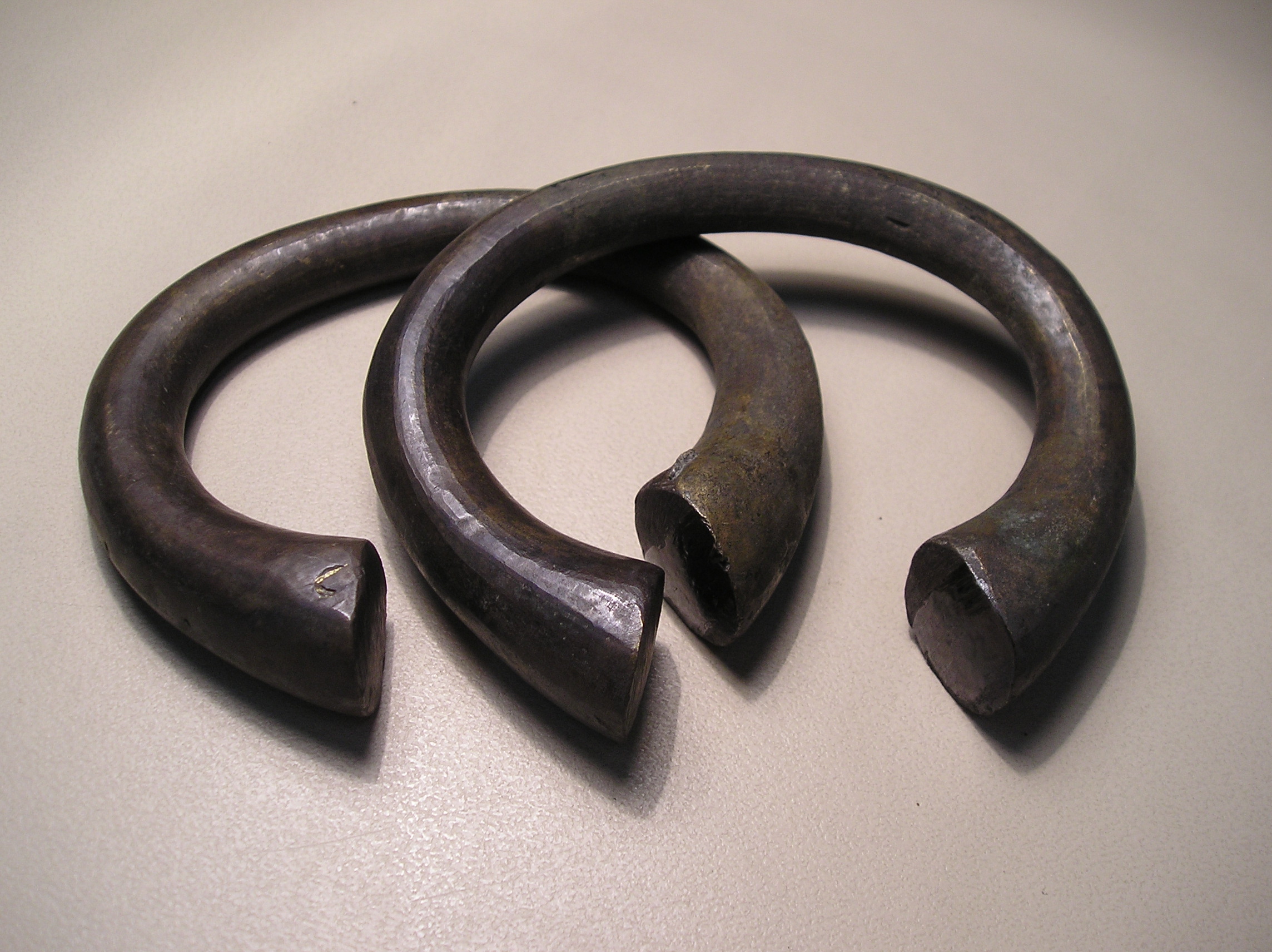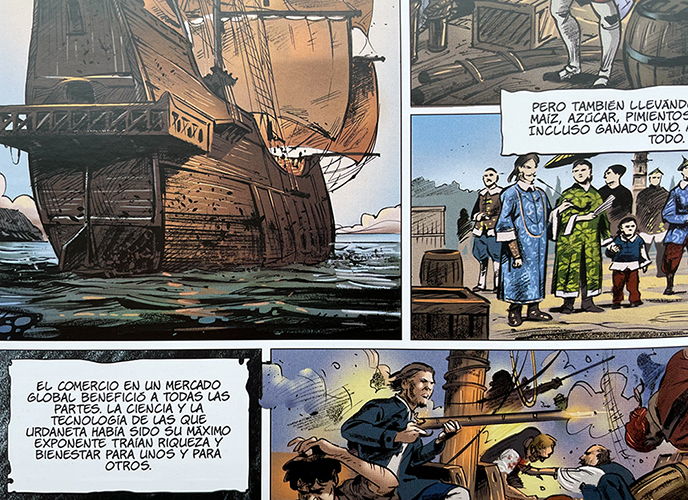Eskuz idatziak, ahoz josiak
INTERLACED. PRESENT-DAY TRACES OF THE COLONIAL CENTURIES
by
Friday, 21/06/2024. From 10:00 am to 7:30 pm.
Interlaced. Present-day traces of the colonial centuries is an excursion to Nabarniz and a public program. With Hinrich Sachs, Ana María Benito Domínguez, Óscar Álvarez Gila and Mariem Iman and Ane Berganza.
PLACE
Frontón municipal Eleizondo de Nabarniz
Barrio Elexalde s/n
48312-Nabarniz
COACH DEPARTURE AND RETURN TIMES
10:00 am: Coach departs from the Basilica of Nuestra Señora de Begoña, Bilbao.
6:30 pm: Coach leaves from Nabarniz.
PROGRAM
11:00 am -11:15 am: Arrival and presentation
11:15 am -12:00 pm: Hinrich Sachs: Recognize relationships
12:00 pm – 12:50 pm: Ana María Benito Domínguez: navigation related to the slave trade in the Basque Country. The ship on the seabed at Iturritxiki
12:50 pm – 1:30 pm: Óscar Álvarez Gila: The disputed memory of slavery in the Basque Country
1:30 pm – 2:00 pm: conversation
2:30 pm – 4:00 pm: Lunch in Nabarniz jatetxea
5:00 pm: Mariem Iman and Ane Berganza: B2B
Interlaced forms part of the activities of Eskuz idatziak, ahoz josiak, a work group whose final aim is to write, imagine and realize an opera.
Eskuz idatziak, ahoz josiak is the 2024-2025 edition of Space is the Place/The Place is Space. The name of this Bulegoa z/b program, which started in 2018, paraphrases the title of the 1974 Afrofuturist film by Sun Ra. It seeks to think in situ, in the space and with the place.
The number of places is limited. To sign up for the coach trip and the lunch, write to bulegoa@bulegoa.org
INTERLACED. PRESENT-DAY TRACES OF THE COLONIAL CENTURIES
Based on findings in contexts as diverse as research in textiles, underwater archaeology, history and visual arts in the Basque Country, we are holding a transdisciplinary day of reflection. The focus of attention are the recently discovered traces of the colonial project and their contemporary interpretations, which will be shared and discussed in several places and along the way. After starting the day with a visit to the Basilica of Nuestra Señora de Begoña in Bilbao, the speakers and participants will travel by coach to Nabarniz, inland from the coast. Over the course of the day we will be exploring the connections between these places and their insertion in the dynamic of the colonial project, addressing both the official narratives and emphasizing what has been erased from history.
HINRICH SACHS: RECOGNIZE RELATIONSHIPS
In his contribution, Hinrich Sachs will start by presenting some visual findings from the research phase for his project There’s no such thing as a free lunch at San Telmo Museoa and beyond: surprisingly local, national, historical, as well as very contemporary examples. Building on this, he will attempt to interpret this series of different representations, that initially seem incoherent, within the framework of a collective, so-called “nautical imaginary”, that reflects its relationship to seafaring as the central technology and tool of the exploitative colonial centuries from 1500 to 1900.
ANA MARÍA BENITO DOMÍNGUEZ: NAVIGATION RELATED TO THE SLAVE TRADE IN THE BASQUE COUNTRY. THE SHIP ON THE SEABED AT ITURRITXIKI
The sunken wreck of a Flemish cargo ship in the bay of Getaria is the oldest testimony of navigation related to the slave trade in the Basque Country. Around 1520 a ship had set sail, probably from Antwerp, chartered by Portuguese merchants and carrying merchandise from central Europe: copper ingots and pots, haberdashery articles and, principally, bracelets [manillas] (pre-monetary tokens used in Africa). It was en route, via Lisbon, to the Gulf of Guinea to purchase slaves – people transported in inhuman conditions to Europe and, massively, to America with the Spanish intervention, completing the triangular route of the slave trade (Europe-Africa-America).
ÓSCAR ÁLVAREZ GILA: THE DISPUTED MEMORY OF SLAVERY IN THE BASQUE COUNTRY
For over two centuries, history and memory in the Basque Country have agreed on one thing: the Basques never accepted slavery and, in fact, this was the only place in the West, not to say the World, “free of this scourge”. Several myths were generated around this idea: that slavery had been prohibited in the Basque Country, that the Basques refused to become involved in the slave trade, and that Basque participation in slavery, always marginal, was limited to the profits of tiny elite. Recent investigations have dismantled all these myths.
MARIEM IMAN AND ANE BERGANZA: B2B
…………………………….…NOW LILLY ALLEN GOES INTO A RECORD SHOP AND IS. LOOK ING FOR SOMETHING SHE’S W EARING A RED DR ESS DOWN TO HER FEET SOME GOLDEN EARRINGS SHE SAYS: HI… I WAS WONDERING IF YOU HAVE ANY ELECTRONICCC PUNK KIND OF RHYTHM KIND OF NEW WAVE RHYTHM SOMETHING LIJKE. BROKJEN BEATSSS BUT DOUBLE BROKENM BEATS LIKE SOULFULLL NO KIND DRUM AND BASSY BUT BROKEN DRUM AND BASS OR LIKE BROKEN VREAK BEATSSS,,, KNOW WHAT I MEAN???? (THE TELEHPONE RINGS: HELLOOO???? GIIIII SHE IS INVITED TO A PARTYY RIGHT NOW SHE GOES TO A A PARTY::::::::
BIOGRAPHIES
Hinrich Sachs (1962) is a visual artist and writer, based in Basel, Switzerland, working in an itinerant fashion. Sachs works in a cross-cultural fashion, investigating image and language regimes of the societal present in a transdisciplinary manner, and in equivalent artistic formats of going public: exhibition, event, and publication. His work has been shown internationally, at institutions such as Le Plateau (Paris); Musée d’art Moderne et Contemporain (Geneva); Museum Ludwig (Cologne); Moderna Museet, (Stockholm); Proyecto AMIL (Lima), Contemporary Art Center (Vilnius), and the Taipei Museum of Fine Arts.
Ana María Benito Domínguez. Graduate in History and Anthropology (Deusto University and University of the Basque Country – UPV/EHU). She began working on Roman archaeology at Oiasso with the Aranzadi Sciences Society. She directed the underwater excavation of the slave ship on the seabed at Iturritxiki (Getaria). She has coordinated historical studies on the Basque ports, authoring those on Getaria and Hondarribia. Recently, she has organised exhibitions popularising maritime questions (on underwater patrimony, shipwrecks, diving, lighthouses…) in: Itsas Museoa (Donostia-San Sebastián), Arrantzaleen Museoa (Bermeo), Atlantikaldia (Rentería), Museo Plasentia de Butrón (Plentzia), Castro Urdiales, amongst others. She has published Naufragios en la Costa Vasca: 1916-1976 (Shipwrecks on the Basque coast: 1916-1976), Getariako Naufragioak and Iturritxiki.
Óscar Álvarez Gila is a lecturer in the History of America at the University of the Basque Country. He has been Visiting Fellow at the European Studies Centre at the University of Oxford, W. Douglass Distinguished Visiting Scholar at the University of Nevada-Reno, Elena Díaz-Verson Amos Eminent Scholar at Columbus State University, and Magnus Mörner Memorial Professor at the University of Stockholm. His field of research is centred on the study of international migrations, the culture and the construction of identities in diaspora communities, the elaboration of images of immigrants through cinema and television, and forced migrations.
Mariem Iman is an artist from Huelva currently based in Bilbao. She was trained in social and cultural anthropology. She has studied inquisitional archives on amorous witchcraft in the Spanish context in the Modern Age and has carried out ethnographic work on amorous magic in Cuba. In her first one-person show, Conversando con Juana María Mulata, she brought these investigations together, combining pictorial installation with archive work. Currently, in her practice she is approaching the processes of divergence that occur during copying, transcribing or translating, as spaces of plastic exploration through drawing, writing, ceramics, engraving, textile work or performance.
Ane Berganza (Bilbao, 1999) holds a degree in Fine Arts from the University of the Basque Country UPV/EHU (2021) and is studying for the Master in Investigation and Creation in Art at the same university. She completed her studies in Expanded Media at the Athens School of Fine Arts. She works in the field of performance, with sound and audio-visual language forming the central axes of her practice. She has carried out stays at different national institutions like Tabakalera (Donostia-San Sebastián), Centro Matadero (Madrid) or Azkuna Zentroa (Bilbao) with the Babestu grant. She held a one-person show at the Centro Cultural Montehermoso (Vitoria-Gasteiz) and has taken part in group shows in other institutions and spaces. In parallel, she has developed her own performative practice, which has been accompanied by the creation of the Herética(s) collective.




